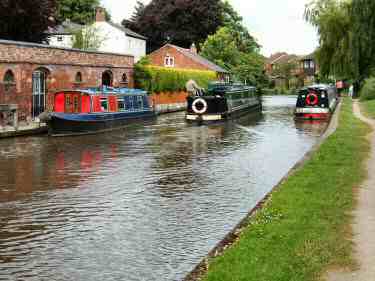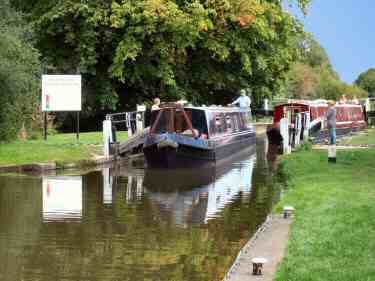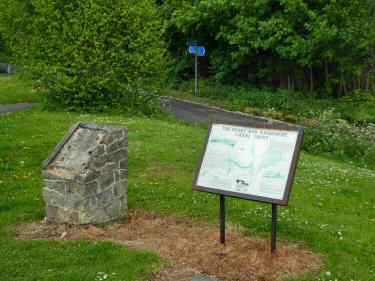A to Z - HIGHLIGHTS OF DERBY AND DISTRICT - PART 14
The A to Z – highlights of Derby and District is a 19-part series and will be published weekly.
Rosehill – Shelton Lock
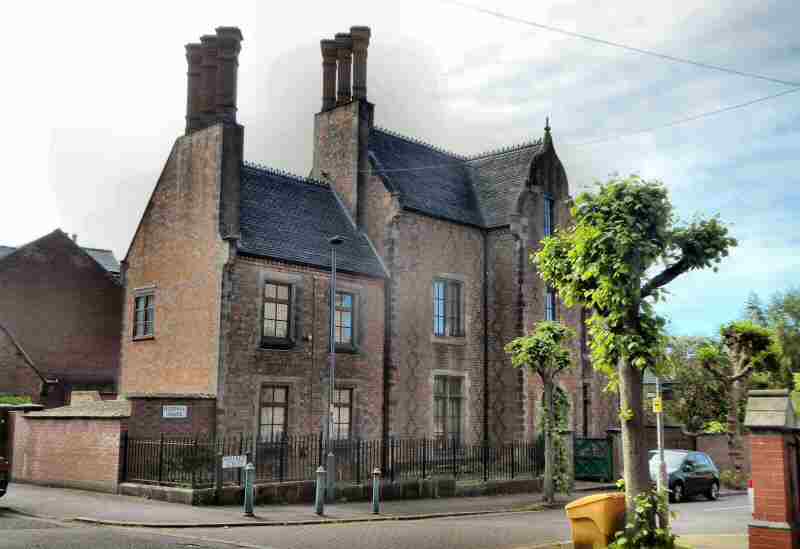
ROSEHILL
An inner-city suburb centred on Rose Hill Street, between Normanton Road and Dairy House Road. Here intensive development took place in the late 19th century when a high volume of terraced houses was built. It is the home of Derby’s historic Arboretum and its two lodges. A notable building in the suburb is Rose Hill House which was probably built in the 1840s.
ROUNDHOUSE
The Roundhouse site with its storage sheds and historic locomotive turntable had been deteriorating, since it was, for the most part, vacated in 1990. The city council took over the site in 1994 and after several plans to save it had failed. This historic site is once again something that all Derby people can look on with great pride, following Derby College’s superb restoration.
ROYAL CROWN DERBY
The story of Derby China dates back to the mid-1700s, when Andrew Planche, a Huguenot, established the first china works, in rented property in Derby. He was joined by William Duesbury a businessman and potter from Longton, Staffordshire who bought the property on Nottingham Road and became the dominant figure in the business. The eventual move to the new site on Osmaston Road signalled a period of further growth and diversification.
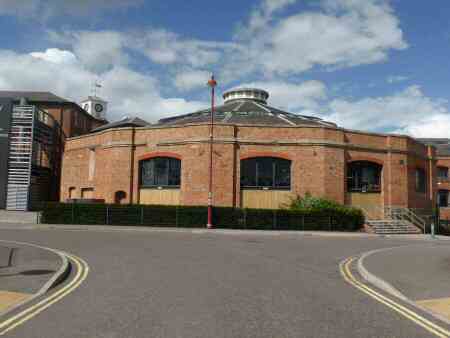
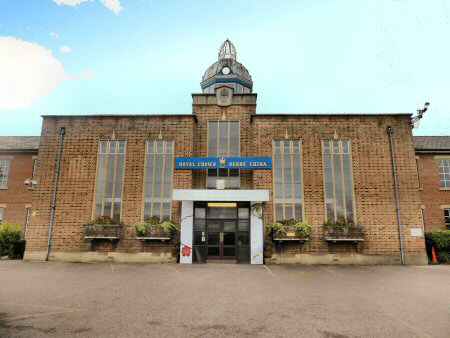
SADLER GATE
The street takes its name from leather workers, not only saddlers but bags, boots and shoes. ‘Gate’ is from the Norse word ‘geata’, which meant street in their language – street of the leather workers. Sadler Gate, unlike Iron Gate, has not been widened and is now virtually traffic-free. It probably originated as a route to The Wardwick and Ashbourne Road and beyond, when the marketplace began its development in c1100.
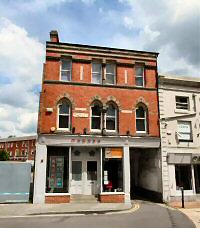
SADLER GATE – BLACKSMITH’S YARD
This is a particularly attractive courtyard off Sadler Gate. As the name implies it was a blacksmith’s yard where horses were once shod. However, it has been used for many other purposes and was known as Palfree’s Yard in the late 1800s. Samuel Palfree’s granddaughter, Barbara Mary Palfree, a veterinary surgeon, had an animal hospital there until 1979. The yard has been redeveloped by a local builder.
SADLER GATE BRIDGE
It may seem a little strange to the visitor walking down Sadler Gate to see a sign at the bottom of the street, above a shop indicating ‘Sadler Gate Bridge.’ The bridge over the Markeaton Brook, rebuilt by William Strutt in 1786 is now covered over following the culverting of the brook in the late 1800s. This enabled a new street, called the Strand to be formed.
SANCTUARY
At the rear of the park-and-ride car park on Pride Park is ‘The Sanctuary’ a bird and wildlife reserve. It was formerly a gas works tip and had long been protected from development as part of the ‘green wedge’ policy of Derby City Council. Deliberately kept quite bare and devoid of trees to attract birds like the skylark, meadow pipit, common tern and many other species.
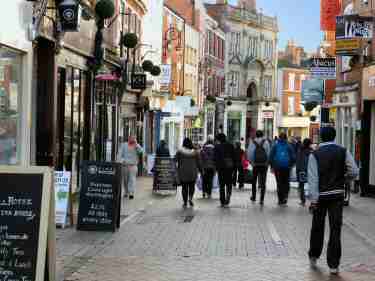
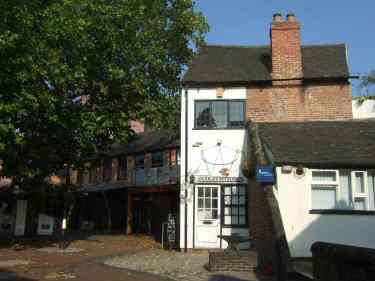
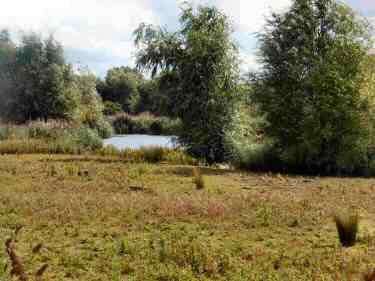
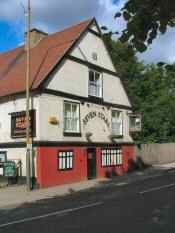
SEVEN STARS
The Seven Stars Inn on King Street was built in 1680, but there is no record of it acting as a pub until 1775. Beer, brewed on the premises until 1965, was drunk out of china tankards instead of glasses. These were supplied by the old porcelain works nearby before 1945 when the supply of mugs ran out. It is a Grade II* listed building.
SHARDLOW
Shardlow is one of the best-preserved inland canal ports in the country. It is a fascinating place to explore, still busy with boats, now used for leisure and not for commerce. The boats range from traditional narrowboats with brightly painted liveries, in summer frequently be-decked with pretty boxes filled with flowers, to pleasure craft of all shapes and sizes. Boat people tend to be friendly and are usually more than happy to exchange a wave or a word or two, which makes a walk along the towpath that much more enjoyable. All this activity is good news for the canal-side pubs, which team with customers in the summer and at the weekend.
A stroll along the canal towpath brings you into contact with many of the old buildings of the Canal Age. Mostly now used for different purposes, but still largely intact: the massive warehouses that once stored ale, cheese, coal, cotton, iron, lead, malt, pottery and salt; and the wharves where goods were loaded and unloaded. This is where the skilled craftsmen worked; the boat builders and repairers, the chandlers, rope-makers and blacksmiths.
The coming of the railways in the mid-1800s brought a decline in Shardlow’s prosperity. No longer was the canal busy with long-distance haulage. The warehouses were put to other uses and the area began to decay. A limited amount of canal trade continued until the 1950s when the last delivery of grain was made. The growth of the leisure boat industry in recent years has once again returned Shardlow to its former vibrancy, with the splendid new marina and boat builders’ yard completed in 1975 always busy with boats.
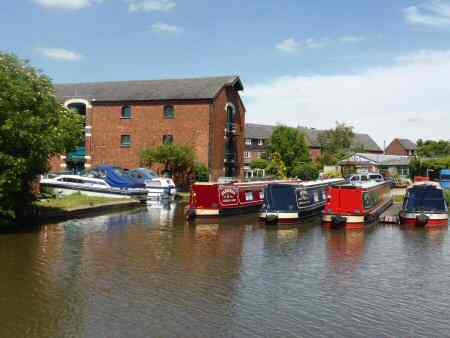
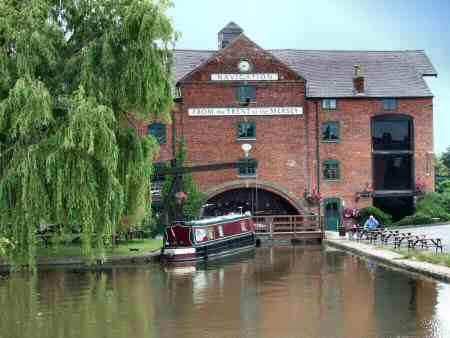
SHARDLOW – DERWENT MOUTH LOCK
Derwent Mouth Lock is the first lock encountered on the Trent and Mersey Canal. A special milepost commemorates the canal. The lock gets its name from the point where the canal meets the River Derwent and River Trent, which forms the border between Derbyshire and Leicestershire. The Derwent rises between Bleaklow and Howden Moors and flows south through Derbyshire for its entire length.
SHARDLOW – TRENT AND MERSEY CANAL
The rapid growth of industry, in the second part of the 18th century, required an improved and inexpensive transportation system. A solution to the transportation problem came when James Brindley from Derbyshire, who could not read or write properly but had a brilliant brain built the Trent and Mersey Canal, known as the Grand Trunk. It connected canal systems throughout the country. After it opened Shardlow became an important inland port.
SHELTON LOCK
Shelton Lock is a small suburb to the south of Derby City centre, located between Chellaston and Allenton. It got part of its name from a local landowner, Joseph Shelton, who built a wharf to the west of Chellaston Road Bridge. This became known as ‘Shelton’s Wharf’ and on the eastern side of the road stood a canal lock and lock-keeper cottage. The canal closed in 1964 and is now used by walkers and cyclists.
